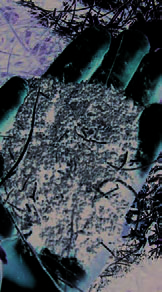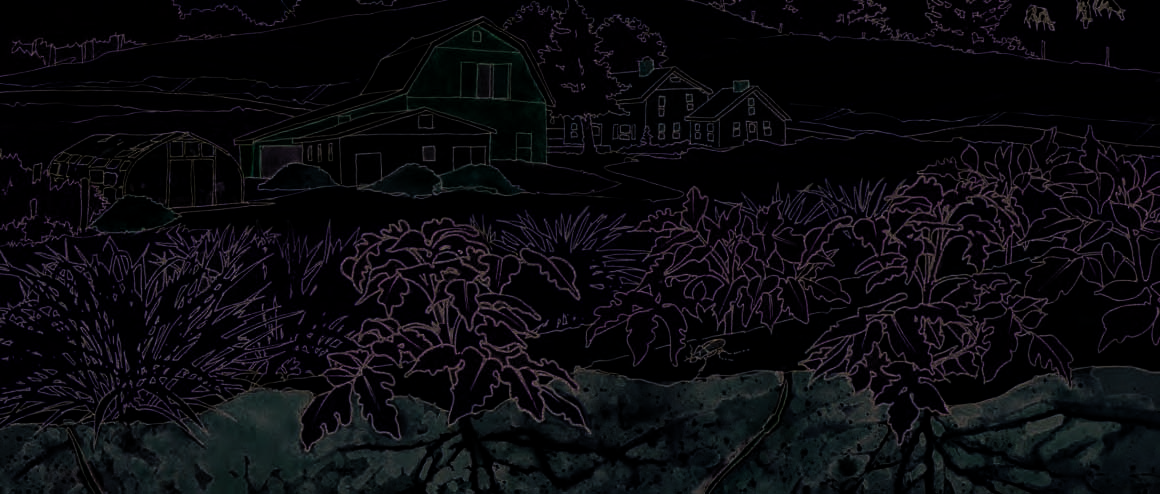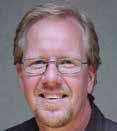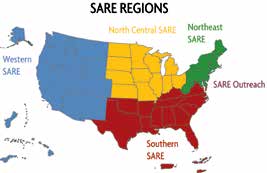







third EditiON
Building SoilS
B
FoR BetteR CRopS
uild
SuStainable Soil ManageMent
Su i
S n
ta g
third EditiON
in S
ab o
le i
l
S S
oi F
l
o
R
M
a B
n e
a t
ge t
M e
e R
“…it is our work with living soil that provides sustainable alternatives to the triple crises of climate, energy, n
t C
and food. No matter how many songs on your iPod, cars in your garage, or books on your shelf, it is plants’
Ro Building SoilS FoR BetteR CRopS
ability to capture solar energy that is at the root of it all. Without fertile soil, what is life?”
p
—Vandana ShiVa, 2008
S
SuStainable Soil ManageMent
Practical information for farmers, ranchers, educators, students,
and gardeners—Presented in an engaging, easy-to-read style.
The third edition of Building Soils—revised, expanded, and now in full color—explains how third
by fred magdoff and harold van es
to use ecological approaches and work with the built-in strengths of your plant/soil system to EditiON
boost fertility and yields while reducing pest pressures and environmental impacts.
“Building Soils for Better Crops is one of the most practical guides on soil management available. As we confront a future of peak oil, climate change and depleted fresh water resources, restoring the health of our soils is more imperative by
today than at any time in history. This 3rd edition is an indispensable resource for farmers and gardeners everywhere.”
fre
—Fred Kirschenmann, distinguished Fellow, Leopold Center for Sustainable agriculture, and President, Stone Barns Center for Food and agriculture d m
ag
“The third edition of Building Soils for Better Crops is clearly written and technically solid—easily accessible do
to students and farmers alike. It’s a must-read for the beginner, and a valuable update for experienced ff
farmers and educators and those who’ve been away from the soil profile for some years.”
an
—Charles Francis, Professor of agronomy and horticulture, University of nebraska d
$20.95
harold van es
10
haNdbOOk

Building SoilS FoR BetteR CRopS
SuStainable Soil ManageMent
third edition
by Fred MagdoFF and harold van es
handbook series book 10
Published in 2009 by the Sustainable Agriculture Research and Education (SARE) program, with funding from the National Institute of Food and Agriculture, U.S. Department of Agriculture This book was published by the Sustainable Agriculture Research
Every effort has been made to make this book as accurate as possible.
and Education (SARE) program under cooperative agreements with
This text is only a guide, however, and should be used in conjunction
USDA’s National Institute of Food and Agriculture, University of
with other information sources on crop, soil, and farm management.
Maryland and University of Vermont.
The editors, authors, and publisher disclaim any liability, loss, or risk,
personal or otherwise, that is incurred as a consequence, directly or
To order:
indirectly, of the use and application of any of the contents of this book.
Online: Visit www.sare.org/WebStore
By check or purchase order: Make payable to Sustainable Agriculture
Mention, visual representation, or inferred reference of a product, ser-
Publications and send to:
vice, manufacturer, or organization in this publication does not imply
endorsement by USDA, the SARE program, or the authors. Exclusion
SARE Outreach Publications
does not imply a negative evaluation.
P.O. Box 753
Waldorf, MD 20604-0753
The opinions expressed in this book do not necessarily reflect the
opinions of the SARE program or USDA.
Cost:
• $20.95 for orders of 1-9 books
Authors: Fred Magdoff and Harold van Es
• $15.71 for 10-24 books (a 25% discount)
Contributing Writer (farmer profiles): Amy Kremen
• $10.47 for 25 or more books (a 50% discount)
Production Manager: Dena Leibman
Copy Editing: Jill Mason
Shipping:
Graphic Design: Kirsten Ankers
• $5.95 for first book (within USA). Add $2 s/h for each additional
Cover Illustration: Frank Fretz
book—up to nine books—shipped within USA.
Indexing: Jill Mason
• For s/h on orders of 10 or more books, call (301) 374-9696 or visit
Printing: Printed by United Book Press on process-chlorine-free, 100%
www.sare.org/WebStore.
post-consumer-waste paper.
International or credit card orders:
• Call (301) 374-9696 or visit www.sare.org/webstore.
Library of Congress Cataloging-in-Publication Data
Magdoff, Fred, 1942-
Building soils for better crops : sustainable soil management / by
Fred Magdoff and Harold van Es. -- 3rd ed.
p. cm. -- (Handbook series ; bk. 10)
Includes bibliographical references and index.
ISBN 978-1-888626-13-1
1. Soil management. 2. Humus. I. Van Es, Harold, 1958- II.
Sustainable Agriculture Research & Education (Program) III. Title.
IV. Series: Sustainable Agriculture Network handbook series ; bk. 10.
S592.8.M34 2009
631.4--dc22
2009031856
Contents
About the Authors ............................................................................................................................................................................................................................................................................
v
About sAre.................................................................................................................................................................................................................................................................................................... vii PrefAce ............................................................................................................................................................................................................................................................................................................... ix IntroductIon .......................................................................................................................................................................................................................................................................................... xi PART ONE orGAnIc MAtter—the KeY to heALthY soILs
1
Healthy Soils ......................................................................................................................................................................................................................... 3
2
Organic Matter: What It Is and Why It’s So Important ................................................................................................................................
9
3
Amount of Organic Matter in Soils ........................................................................................................................................................................... 23
4
The Living Soil ..................................................................................................................................................................................................................... 37
PART TWO PhYsIcAL ProPertIes And nutrIent cYcLes
5
Soil Particles, Water, and Air ....................................................................................................................................................................................... 49
6
Soil Degradation: Erosion, Compaction, and Contamination ................................................................................................................... 57
7
Nutrient Cycles and Flows ............................................................................................................................................................................................. 69
PART THREE ecoLoGIcAL soIL MAnAGeMent
8
Soil Health, Plant Health, and Pests ........................................................................................................................................................................ 77
9
Managing for High-Quality Soils: Organic Matter, Soil Physical Condition, Nutrient Availability ...................................... 87
10
Cover Crops ........................................................................................................................................................................................................................... 101
11
Crop Rotations ..................................................................................................................................................................................................................... 115
12
Animal Manures for Increasing Organic Matter and Supplying Nutrients ........................................................................................ 129
13
Making and Using Composts ....................................................................................................................................................................................... 141
14
Reducing Erosion and Runoff ..................................................................................................................................................................................... 153
15
Preventing and Lessening Compaction .................................................................................................................................................................. 161
16
Reducing Tillage ................................................................................................................................................................................................................. 173
17
Managing Water: Irrigation and Drainage ........................................................................................................................................................... 187
18
Nutrient Management: An Introduction ............................................................................................................................................................... 203
19
Management of Nitrogen and Phosphorus .......................................................................................................................................................... 213
20
Other Fertility Issues: Nutrients, CEC, Acidity, and Alkalinity ................................................................................................................. 227
21
Getting the Most from Routine Soil Tests ............................................................................................................................................................. 235
PART FOUR PuttInG It ALL toGether
22
How Good Are Your Soils? Field and Laboratory Evaluation of Soil Health ..................................................................................... 257
23
Putting It All Together ..................................................................................................................................................................................................... 267
GLossArY ............................................................................................................................................................................................................................................................ 277
resources .......................................................................................................................................................................................................................................................... 283
Index .................................................................................................................................................................................................................................................................... 287
iii
Building SoilS for Better CropS: SuStainaBle Soil ManageMent


about the authors
Fred Magdoff is emeritus professor of plant and soil science at the University of Vermont and adjunct professor at Cornell University. He was Plant and Soil Science Department chair for eight years and for two decades was the coordinator of the twelve-state Northeast Region for the U.S. Department of Agriculture’s Sustainable Agriculture Research and Education (SARE) program. He is also a fellow of the American Society of Agronomy. He has worked on soil testing for nitrogen and phosphorus, the effects of manures on soil properties and crop yields, buffering of soil pH, and many other issues related to soil health. He lives in Burlington and Fletcher, Vermont, with his wife, dog, two cats, a large garden, an occasional flock of chickens, and a small herd of beef cows.
Harold van Es is a professor of soil science at Cornell University and serves as chair of the Department of Crop and Soil Sciences. Born in Amsterdam, Netherlands, he grew up in an environment where soil and water are critical issues. His current research focuses on soil health, computational agriculture, and environmental statistics. He teaches courses in soil management and space-time statistics and also leads an extension program. He is a fellow of the Soil Science Society of America and the American Society of Agronomy. He lives in Lansing, New York, with his wife, three children, and two cats.
v
Building SoilS for Better CropS: SuStainaBle Soil ManageMent

about sare
SARE is a grant-making and outreach program. Its mission is to advance—to the whole of American agriculture—
innovations that improve profitability, stewardship, and quality of life by investing in groundbreaking research and education.
Since it began in 1988, SARE has funded more than 5,000 projects around the nation that explore innovations, from rotational grazing to direct marketing to cover crops—and many other best practices. Administering SARE grants are four regional councils composed of farmers, ranchers, researchers, educators, and other local experts, and coordinators in every state and island protectorate run education programs for ag professionals. SARE Outreach publishes practical books, bulletins, online resources, and other information for farmers and ranchers. All of SARE’s activities are funded by the National Institute of Food and Agriculture, U.S. Department of Agriculture.
Guided by the belief that healthy soil is the foundation of healthy agriculture, SARE has made soil quality research and education a cornerstone of its project portfolio—and made Building Soils for Better Crops one of its signature handbooks. This new, all-color edition is an authoritative text on soil health, detailing the latest research and experiences of soil scientists—many of whom are SARE grant participants, including the book’s authors. Some other SARE
titles that might be of interest to Building Soils readers: (Books) Managing Cover Crops Profitably, third edition; The New American Farmer, second edition; Crop Rotation on Organic Farms; (Bulletins) Diversifying Cropping Systems; Transitioning to Organic Production; and Smart Water Use on Your Farm or Ranch.
For more information about SARE’s grant-making program and information products, visit www.sare.org or contact: SARE Outreach, 1122 Patapsco Bldg., University of Maryland, College Park, MD 20742-6715; info@sare.org; (301) 405-8020.
SARE’s four regional offices and outreach office work to advance sustainable innovations to the whole of American agriculture.
vii
Building SoilS for Better CropS: SuStainaBle Soil ManageMent















